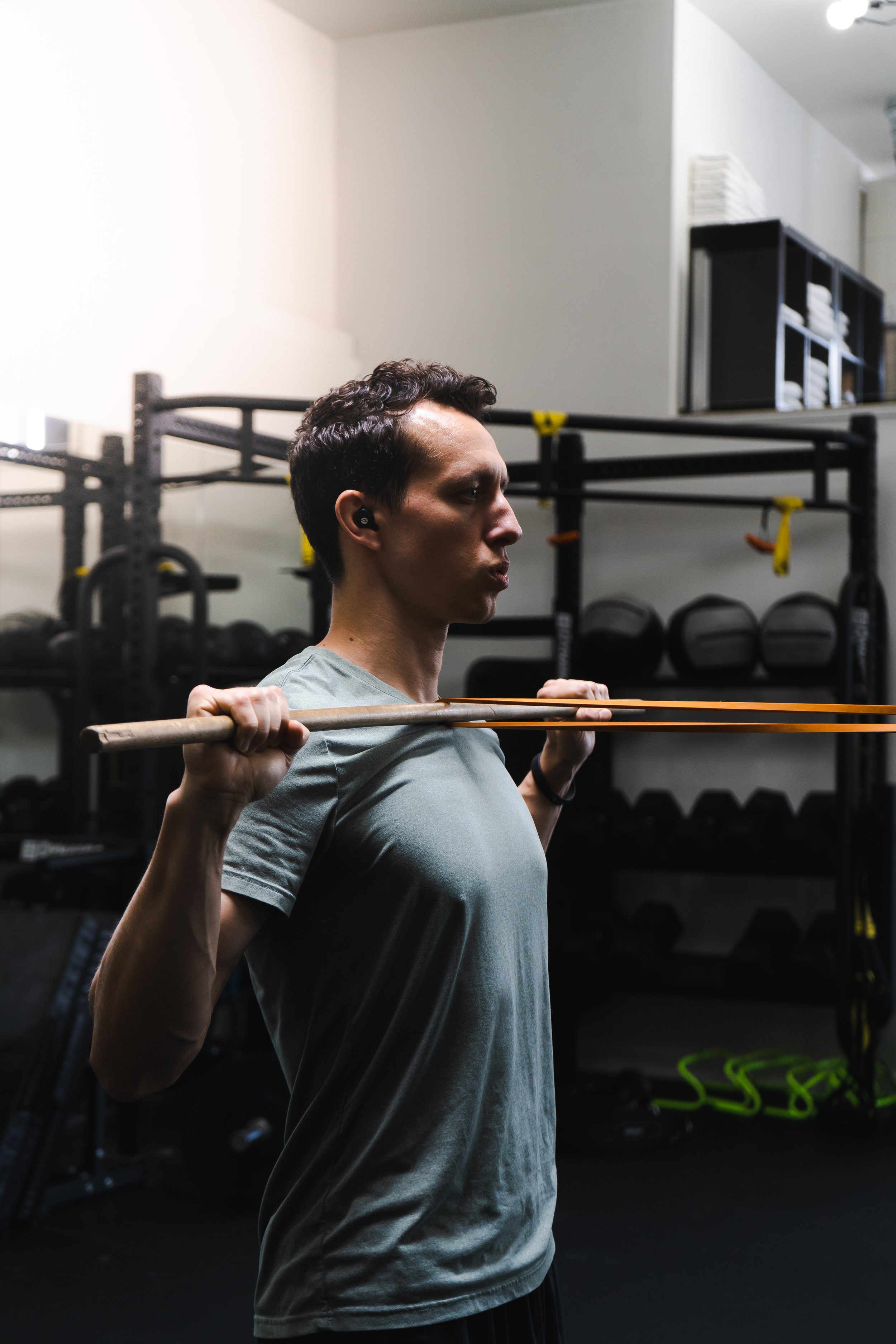Protecting Your Rotator Cuff: Exercises and Tips
The rotator cuff is critical in shoulder mechanics, but it’s often overlooked until pain or injury occurs. This comprehensive guide aims to educate on the anatomy, potential injuries, and effective strategies for strengthening and protecting these small but vital shoulder muscles.
Table of contents
Understanding the Rotator Cuff
Why Do Rotator Cuff Injuries Happen?
Preventing Rotator Cuff Injuries
Warm-Up Routine for Exercising
Essential Rotator Cuff Exercises
Seated Row with Band
Dumbbell Shoulder Press
Reverse Fly
Advanced Rotator Cuff Strengthening
Cable External Rotation
Face Pulls with Resistance Band
Stretching for Flexibility and Recovery
Sleeper Stretch
Yoga Poses for Shoulders
Lifestyle Tips for Rotator Cuff Health
Understanding the Rotator Cuff
The rotator cuff comprises four small muscles around the shoulder joint: the supraspinatus, infraspinatus, teres minor, and subscapularis. These muscles work together to stabilize the shoulder and facilitate a full, articulate range of motion.
Why Do Rotator Cuff Injuries Happen?
Rotator cuff injuries are common and can be due to several factors:
Age-Related Wear and Tear: Degeneration of connective tissue over time.
Repetitive Stress: Activities like painting, swimming, or repetitive throwing sports (baseball, tennis, etc.) can overuse the shoulder.
Poor Posture: Slouching and sitting at the computer all day can lead to muscle imbalances and shoulder weakness.
Lack of Flexibility or Strength: Imbalances in muscle strength and/or flexibility can lead to strain.
Acute Trauma: Falls or sudden movements can cause injury.
Preventing Rotator Cuff Injuries
Regular Exercise: Strengthening the shoulders and upper back muscles. Strength equals resilience.
Proper Technique in Sports and Activities: Ensuring correct form during various sports movements to avoid undue stress.
Regular Breaks and Modifications: If repetitive overhead motion is unavoidable, taking breaks or modifying your movement can take the strain off of the rotator cuff.
Ergonomic Workspace: Especially for desk workers, an ergonomic setup can help maintain good posture and healthy shoulders.
Warm-Up Routine for Exercising
Start with a 10-minute warm-up focusing on the upper body. This can include arm circles, shoulder shrugs, and light cardio like brisk walking or jogging.
Essential Rotator Cuff Exercises
Seated Row with Band
Sit on the floor, legs extended, with a loop band wrapped around your feet.
Hold the band with both hands and row, pulling the elbows back.
Focus on squeezing the shoulder blades together while avoiding shrugging up towards the ears.
Perform 3 sets of 10-12 reps.
Dumbbell Shoulder Press
Sit or stand with a dumbbell in each hand at shoulder height.
Press the weights overhead without locking your elbows while bracing your abs and glutes; remember to breathe.
Slowly lower back down under control.
Do 2-3 sets of 10-12 reps.
Reverse Fly
Bend forward at the hips, dumbbells in hand, arms hanging toward the floor from the shoulder.
Raise the arms to the side with a slight bend in the elbows, squeezing the shoulder blades.
Perform 3 sets of 10-12 reps.
Advanced Rotator Cuff Strengthening
Cable External Rotation
Stand side-on to a cable machine, cable set to elbow height.
Hold the handle with the hand farthest from the machine.
Rotate your arm outward, keeping the elbow tight to the body.
Do 2-3 sets of 10-12 reps per side.
Face Pulls with Resistance Band
Attach a resistance band to something anchored at head height.
Pull the band towards your forehead while flaring your elbows out, pulling your hands wide toward the sides of your head.
Perform 3 sets of 12-15 reps.
Stretching for Flexibility and Recovery
Sleeper Stretch
Lie on your side, bottom arm bent at a 90-degree angle.
Use your top hand to press down on the wrist of the bottom arm gently.
Hold for 30 seconds, then switch sides.
Yoga Poses for Shoulders
Try poses like 'Child’s Pose' and 'Cow Face Pose' for gentle stretching.
Lifestyle Tips for Rotator Cuff Health
Maintain a Healthy Weight: Less strain overall on all joints and muscles.
Balanced Diet: Nutrients for muscle repair and bone health.
Hydration: Essential for muscle function.
Adequate Sleep: Vital for recovery and repair.
Conclusion
A comprehensive approach to rotator cuff health involves understanding its function, regular strengthening and stretching, and lifestyle choices. By incorporating these practices, you can significantly reduce the risk of injury and maintain optimal shoulder health for years to come.

